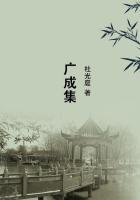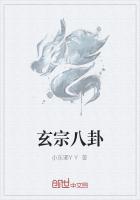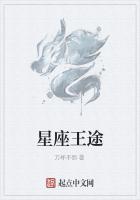The old Greeks and Romans had no substitute for the papyrus, which was so brittle that it could not be folded or creased. It could not be bound up in books, nor could it be rolled up unsupported. It was secure only when it had been wound around a wooden or metal roller.
After the wholesale destruction of the libraries of ink-written MSS., the black inks began to fall into disuse;their value in respect to quality gradually deteriorated, caused by the displacement of gummy vehicles, and a consequent absence of any chance of union between the parchment or papyrus and the dry black particles, which could be "blown" or washed off. To employ any other kind of ink except one of natural origin like the juice of berries which soon disappeared, was forbidden by prevailing religious customs. Such conditions naturally merged into others, in the shape of "ink" substitutes for writing;the stylus, with its accompanying sheets or tablets of ivory, wood, metal and wax came into popular vogue and so continued for many centuries, even after the employment of ink for writing purposes had been resumed.
Ovid, in his story of Caunus and Byblis, illustrates the use of the tables (tablets), and he lived at the time of the birth of Christ, thus translated:
"Then fits her trembling hands to Write:
One holds the Wax, the Style the other guides, Begins, doubts, writes, and at the Table chides;Notes, razes, changes oft, dislikes, approves, Throws all aside, resumes what she removes.
* * * * * * * *
"The Wax thus filled with her successless wit, She Verses in the utmost margin writ."He also makes reference to inks, in the passage taken from his first elegy, "Ad Librum:""Nec te purpureo velent vaccinia succo;
Non est conveniens luctibus ille color.
Nec titulus minio, nec cedro charta notetur.
Candida nec nigra cornua fronte geras." which Davids translates as follows:
"TO HIS BOOK.
"Nor shall huckleberries stain (literally veil) thee with purple juice:
That color is not becoming to lamentations.
Nor shall title (or head-letter) be marked with vermillion, or paper with cedar, Thou shalt carry neither white nor black horns on thy forehead (or front, or frontispiece)."The traditions handed down as of this era relating to the efforts to find some substitute for "Indian"ink which would not only "bind" to parchment and vellum but also would be satisfactory to the priests, are more or less confirmed by the younger Pliny, and makes it safe to assume that several were invented and employed in writing, though possessing but little lasting qualities. Their use and natural disappearance is perhaps the real cause of the fact that there are no original MSS. extant dating as of or belonging to the time immediately preceding or following the birth of Christ, or indeed until long after his death.
There is some authority though for the statement that at this time two vitriolic substances were used in the preparation of black ink,--a slime or sediment (Salsugo) and a yellow vitriolic earth (Misy). This last-named mineral, is unquestionably the same natural chemical mentioned by writers, which about the end of the first century was designated "kalkanthum" or "chalkanthum" and possessed not only the appearance of, but the virtues of what we know as blue copperas or sulphate of copper. It continued in use as long as men were unacquainted with the art of lixiviating salt, or, in other words, as long as they had no vitriol manufactories. Commingled with lampblack, bitumen or like black substances in gummy water, it was acceptable to the priests for ritualistic writings and was in general vogue for several centuries thereafter under the name of (blue) "vitriolic"ink, notwithstanding the fact that there could not be any lasting chemical union between such materials.
It was the so-called "vitriolic" ink, which is said to have "corroded the delicate leaves of the papyrus and to have eaten through both parchment and vellum."These deductions, however, do not agree with some of the historians and scholars like Noel Humphreys, author of the "Origin and Progress of the Art of Writing," London, 1855, a recognized authority on the subject of ancient MSS., who but repeats in part the text of earlier writers, when he says, p. 101:
"Examples of early Greek MSS. of the last century previous to the Christian era are not confined to Egyptian sources; the buried city of Herculaneum, in Italy, partially destroyed about seventy-nine years before the Christian era, and injured by subsequeut eruptions, till totally destroyed by the most violent eruption of Vesuvius on record, that of the year 471 A. D. having yielded several specimens."The MSS. examples mentioned in the citation, must of necessity refer to specimens of writing made with "vitriolic" and even more ancient inks. They are to be considered in conjunction with the historical fact that these cities were buried for more than sixteen hundred years, counting from the first eruption, before they were brought to light (Herculaneum was discovered A. D. 1713 and Pompeii, forty years later);also that they must have been subjected to intense heat and a long period of decay which could only operate to rob them of all traces of natural ink phenomena.
Furthermore, the information Mr. Humphreys seeks to convey, dates contemporaneously with the first eruption of Vesuvius, which occurred seventy-nine years AFTER the Christian era and not seventy-nine years BEFORE it.
This stupendous blunder involves a period of one hundred and fifty-eight years; if it is rectified, the "early Greek MSS." are shown to emanate from the second half of the first century following the birth of Christ and confirming to some extent the deductions hereinbefore made, although the probabilities are that they belong to later periods, included in the third and fourth centuries.

